Large Language Models (LLMs) are quickly becoming indispensable, impacting everything from job applications and healthcare access to simply drafting emails. As these powerful AI models increasingly influence critical decisions, a fundamental question arises: how can we ensure they uphold human rights, rather than inadvertently contributing to violations?
Currently, there’s a significant gap in how we assess LLMs. Existing benchmarks often prioritize performance in specific tasks like mathematics or scientific reasoning, or address narrow ethical concerns such as social bias. A dedicated tool to evaluate an LLM’s comprehension and application of human rights principles has been conspicuously absent—until now.
Dr. Savannah Thais leading the research at Women At The Table and the AI & Equality Initiatiave and her team are bridging this gap. During a recent presentation, she unveiled on the process and methodology of the ambitious and pioneering initiative: the development of the first-ever Human Rights AI Benchmark. This groundbreaking project, a collaborative effort between technical AI researchers and human rights advocates, aims to fundamentally redefine how we construct and evaluate responsible AI.The Imperative for a Human Rights Benchmark
Dr. Thais underscores that LLMs are already deeply integrated into processes that directly bear on human rights. Consider an LLM screening résumés, influencing housing applications, or even shaping critical healthcare decisions. The potential for these systems to perpetuate or introduce bias and discrimination is immense. Dr. Thais argues that, at a minimum, LLMs must not contribute to human rights violations. The ultimate objective, however, is to harness this technology to actively expand human rights globally.Beyond Technicalities: Crafting an Effective Benchmark
Building a truly effective benchmark extends beyond mere technical prowess. Dr. Thais highlights three crucial, often overlooked, dimensions:
- Understanding Real-World Application (Construct Validity): A genuinely useful benchmark must accurately reflect how people actually interact with LLMs and align with human expectations. This concept, known as “construct validity,” is vital. For example, merely testing an LLM with a standardized bar exam doesn’t prove it can practice law; it demonstrates its ability to pass a test about law, which is a distinct skill. The benchmark needs to mirror the everyday work of human rights experts.
- Mapping the “Phase Space”: Comprehensive Variation: The benchmark must encompass the full spectrum of human rights scenarios. Just as a math benchmark shouldn’t exclusively feature algebra problems, a human rights benchmark needs to consider diverse situations, various types of violations, and a wide array of affected groups. This necessitates creating a detailed taxonomy of human rights obligations, types of failures (e.g., structural, process, outcome), perpetrators (e.g., state, NGO, company), and rights holders (e.g., women, children, indigenous people, people with disabilities).
- Measurable Tasks for LLMs: High-level human rights concepts must be translated into specific, quantifiable tasks for an LLM. This involves deconstructing complex reasoning into smaller subtasks and employing various prompt types. These can range from multiple-choice questions for issue identification and rule recall, to ranking questions for rule application, and even open-ended questions for proposing remedies.
Systematic Construction: A Three-Step Approach
The team is systematically building the benchmark through a rigorous three-step process:
- Scenario Generation: For each human right, 20 realistic scenarios are meticulously crafted to capture different facets of the human rights taxonomy. These scenarios serve as the foundational context for the LLM.
- Claims, Actions, and Impacts (Sub-scenarios): Each overarching scenario is then broken down into 4-8 specific impacts or actions performed by various actors. These specific instances form the basis for the subsequent LLM prompts.
- IRAP-Based Prompts: Drawing inspiration from established legal reasoning methodologies, each sub-scenario generates five distinct prompts using a modified IRAP (Issue, Rule, Application, Conclusion/Proposed Remedy) framework:
- Issue Identification: Multiple-choice questions designed to identify violated obligations or failure modes.
- Rule Recall: Multiple-choice questions focused on identifying applicable laws and conventions.
- Rule Application: Ranking different applicable rules by their relevance to the given sub-scenario.
- Proposed Remedies: An open-ended question prompting the LLM to suggest concrete state actions to rectify the identified situation.
Initial Focus: Water, Expanding to Justice
The project’s initial focus is on the “Right to Water” due to its concrete and well-defined nature, with 10 scenarios already completed and currently undergoing expert annotation. The next right slated for development is the “Right to Due Process,” ensuring a balance between socioeconomic and civic/political rights.
This pioneering Human Rights AI Benchmark is poised to become an invaluable resource for researchers, developers, and human rights organizations worldwide. By establishing a standardized and robust method for evaluating LLMs against fundamental human rights principles, it aims to cultivate the development of AI that is not only intelligent and powerful but also profoundly ethical, responsible, and ultimately, a force for good in the world.
Get Involved!
There are abundant opportunities for both human rights experts (as annotators) and data scientists/AI researchers to contribute to this crucial initiative. If you are passionate about ensuring that AI genuinely serves humanity, this project offers a unique chance to be at the forefront of responsible AI development and make a tangible difference. Get in touch: Savannah(at)womenatthetable(.)net
